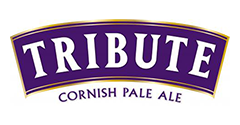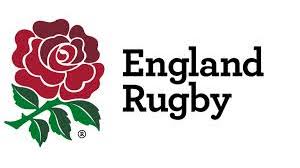
Law Variations Approved to Lower Tackle Height in Community Rugby Union in England
Issued by Rugby Football Union
Following an RFU Council decision (in January) to lower the tackle height in community rugby to improve player safety by reducing the risk of head-on-head contact and concussion, the RFU has undertaken extensive consultation to listen to feedback on how to best define and implement the law variations.
The consultation heard a wide range of views and gathered thoughts and ideas from 8,500 people through an online open survey, the RFU also met with over 1000 people during 25 in-person and virtual forums across 13 locations and met 270 coaches, players, match officials, disciplinary officers, Club chairs and CBs, parents and teachers through 22 focus groups and online panels.
The open survey was independently analysed by the research company YouGov and this feedback was presented to the RFU Council who today (21 April) voted to adopt the law changes with the new tackle height level from 1 July being defined as below the base of the sternum: The area of the tummy or belly and below.
Having listened to feedback, the RFU council has also approved a Regulation amendment to allow a framework for age grade rugby activity over the summer, enabling appropriate contact activity to take place, this builds on the summer framework as used in the last few years and replaces the previous age grade out of season regulations.
The game wide consultation has informed:
- The description of the low-risk zone, law wording and ball carrier descriptions
- The part of open play that will be officiated as it currently is – i.e. the ‘pick and drive’
- The application and empathetic approach to how sanctions will be imposed
- The content and style of support materials to be rolled out
- The requirement to encourage change in the tackle height in the elite game
- The monitoring of the reduction of head-on-head impacts and any potential changes in participation
The RFU Council is reviewing law application guidance which is being written based on the findings of the consultation. The guidance, which will be published in the coming weeks, will focus on helping players, coaches and match officials interpret and apply the law changes and other areas of law that will come under additional focus (e.g. actions of the ball carrier, sanctioning, clarification of open play when tackles occur etc).
A detailed plan of content and training materials for each specific rugby audience is planned with guidance documents, training videos, quizzes and online and face to face training running from May throughout the summer and through into the next season.
A summary of the findings of the consultation includes:
- Almost two-thirds of respondents (62%) are concerned about the risk of concussion in the context of long-term brain health in rugby. Former players, parents of age-grade players and match officials are most concerned, while current players are less concerned.
- 35% of respondents describe the upper limit of the new safe tackle zone as “below the base of the sternum” (29% describing as midriff and 22% stomach). Older age groups tend to focus on this description, while younger adults, parents and teachers lean towards describing the area as the “stomach”.
- An overwhelming majority (88%) agree that the pick and go / pick and drive should not change as a result of proposed tackle height law changes.
- Many attendees of the forums and Panels recognised that the “the ‘pick and drive’ occurs at lower speeds and with lower impact, though a small number of individuals, especially coaches and match officials, sought clarity on when the pick and go ends in open play.
- Almost half of respondents (45%) agree that the shoulders and head of the ball carrier should be above the hips when carrying the ball into contact. “Head above hips” was frequently prompted by forum attendees and panellists. Around one in five respondents agree that the ball carrier must not lower their body height within a set distance of the carrier. However, there was little consensus as to what that distance should be.
- Just over half of survey respondents rank “in person resources” as the most important way that the RFU can support implementation of these changes, with Players, Coaches and Match Officials suggesting joint training sessions in pre-season. A quarter felt that on-demand online training would be most helpful, with teachers and coaches particularly keen on this option.
Speaking about the law variation and consultation RFU President, Nigel Gillingham said: “I would like to thank everyone who contributed to this consultation and to say thank you in advance to the wider rugby family who will be vital to ensuring we implement this change successfully. We along with many other Unions across the world are lowering the tackle height to reduce the risk of concussion. We know change is challenging however, it is imperative that we are guided by the science to help make the game safer for our players. As part of our ongoing injury surveillance studies, we will monitor the impact of this law variation and would encourage as many clubs as possible to sign up to participate in CRISP by contributing their data it will enable us to continue to monitor and introduce injury prevention strategies.”
The law changes from 1 July are as follows:
Law 9 Foul Play
9.11.(a) Players must not do anything that is reckless or dangerous to others including leading with the head, shoulder, elbow or forearm, or jumping into, or over an opponent.
9.11.(b) Ball-carriers must not lower their height significantly before making contact with an opponent in open play
9.12. A player must not physically or verbally abuse anyone. Physical abuse includes, but is not limited to, biting, punching, contact with the eye or eye area, striking with any part of the arm, head, shoulder, forearm or knee(s), stamping, trampling, tripping or kicking.
9.13. A player must not tackle or attempt to tackle an opponent early, late or dangerously. Dangerous tackling includes, but is not limited to, tackling or attempting to tackle an opponent in open play above the base of the sternum even if the tackle starts below the base of the sternum.















